 |
|---|
Provincial Council elections were held in Greenland for the first time on 29 June 1951, alongside district council elections. [1] Voter turnout was 73%. [1]
 |
|---|
Provincial Council elections were held in Greenland for the first time on 29 June 1951, alongside district council elections. [1] Voter turnout was 73%. [1]
The Provincial Council was created after the Danish Parliament passed a law on 27 May 1950. It replaced two provincial councils covering the north and south of the island, which had been indirectly elected. [1]
All Danish citizens over the age of 23 who had lived on the island for at least six months were eligible to vote or run for election. Candidates required nomination from 5–10 supporters. [1] The 13 members of the Provincial Council were elected in single-member constituencies
The election had to be re-run in two constituencies; in Upernavik icy conditions had prevented distribution of election materials, whilst a measles outbreak in Nanortalik meant that most voters were ill on election day. [1]
| Constituency | Winning candidate | Votes received | % | Total votes |
|---|---|---|---|---|
| Disko | Jens Olsen | 124 | 20.60 | 602 |
| Disko Bugt | Marius Sivertsen | 141 | 26.76 | 527 |
| Egedesminde | Frederik Lynge | 149 | 36.08 | 413 |
| Frederikshaab | Abel Kristiansen | 176 | 32.96 | 534 |
| Godthåb | Augo Lynge | 567 | 78.97 | 718 |
| Holsteinsborg | Knud Olsen | 97 | 25.13 | 386 |
| Julianehaab | Frederi Nielsen | 184 | 43.50 | 423 |
| Kangaatsiaq | Nikolai Rosing | 239 | 63.56 | 376 |
| Nanortalik | Jacob Nielsen | 130 | 22.00 | 591 |
| Narsaq | Gerhard Egede | 207 | 75.55 | 274 |
| Sukkertoppen | Peter Egede | 210 | 37.37 | 562 |
| Upernavik | Hendrik Olsen | 147 | 35.85 | 410 |
| Uummannaq | Peter Fleischer | 123 | 22.40 | 549 |
| Source: Arctic | ||||
The Provincial Council met for the first time on 25 September 1951. [1]
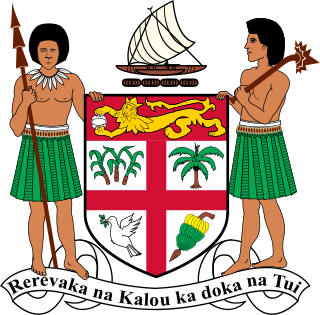
Since becoming independent of the United Kingdom in 1970, Fiji has had four constitutions, and the voting system has changed accordingly.

There are three types of elections in Denmark: elections to the national parliament, local elections, and elections to the European Parliament. Referendums may also be called to consult the Danish citizens directly on an issue of national concern.
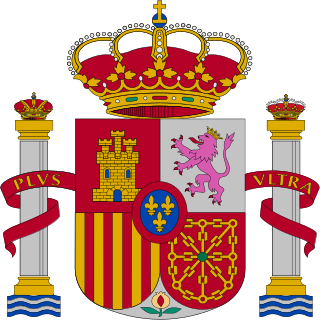
Elections in Spain encompass four different types: general elections, regional elections, local elections, and elections to the European Parliament. General elections and regional elections are typically conducted at the conclusion of the national or regional legislative mandate, which usually spans four years since the previous election. However, early elections can be called in certain circumstances. On the other hand, local council elections and elections to the European Parliament follow fixed dates, although some local government bodies, such as provincial councils, are not directly elected. In most elections, a party-list proportional representation (PR) system is employed, while the Senate utilizes the plurality system.

The Assembly of the Republic, commonly referred to as simply Parliament, is the unicameral parliament of Portugal. According to the Constitution of Portugal, the parliament "is the representative assembly of all Portuguese citizens". The constitution names the assembly as one of the country's organs of supreme authority.
Elections in the Philippines are of several types. The president, vice-president, and the senators are elected for a six-year term, while the members of the House of Representatives, governors, vice-governors, members of the Sangguniang Panlalawigan, mayors, vice-mayors, members of the Sangguniang Panlungsod/members of the Sangguniang Bayan, barangay officials, and the members of the Sangguniang Kabataan are elected to serve for a three-year term.

Elections in Montserrat take place within the framework of a multi-party democracy and a parliamentary system. The Legislative Assembly is directly elected, and a Chief Minister is selected by the party or coalition with the most seats in the Assembly.
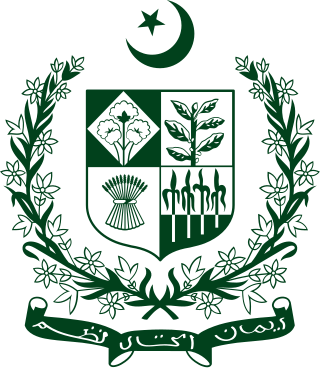
Since its establishment in 1947, Pakistan has had a non-symmetric federal government and is a federal parliamentary democratic republic. At the national level, the people of Pakistan elect a bicameral legislature, the Parliament of Pakistan. The parliament consists of a lower house called the National Assembly, which is elected directly via first-past-the-post voting, and an upper house called the Senate, whose members are chosen by elected provincial legislators. The head of government, the Prime Minister, is elected by the majority members of the National Assembly and the head of state, the President, is elected by the Electoral College, which consists of both houses of Parliament together with the four provincial assemblies. In addition to the national parliament and the provincial assemblies, Pakistan also has more than five thousand elected local governments.

General elections were held in Denmark on 21 September 1971 and in the Faroe Islands on 5 October. The Social Democratic Party remained the largest in the Folketing, with 70 of the 179 seats. Voter turnout was 87% in Denmark proper, 57% in the Faroe Islands and 52% in Greenland.
The Edmonton provincial electoral district also known as Edmonton City from 1905 to 1909, was a provincial electoral district in Alberta, Canada mandated to return members to the Legislative Assembly of Alberta from 1905 to 1917 and again from 1921 to 1959.
The 1888 North-West Territories general election elected members of the 2nd Legislative Council of the North-West Territories. The 2nd Legislative Council of the North-West Territories replaced the 1st Council of the North-West Territories. The 2nd Legislative Council of the North-West Territories was replaced by the 1st North-West Assembly in 1891 when the quota of elected members was reached.
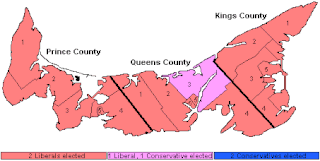
The 1993 Prince Edward Island general election was held on March 29, 1993.

The 1989 Prince Edward Island general election was held on May 29, 1989.

The 1974 Prince Edward Island general election was held on April 29, 1974.

The Landsting was the upper house of the Rigsdag, from 1849 until 1953, when the bicameral system was abolished in favour of unicameralism. The Landsting had powers equal to the Folketing, which made the two houses of parliament hard to distinguish.

General elections were held in Fiji between 17 April and 4 May 1963. For the first time, women and indigenous Fijians were given the right to vote alongside the male European and Indo-Fijian population.

Landsting elections were held in Denmark on 6 April 1943, with the exception that the electors were elected on 23 March. Along with the corresponding Folketing election, it was the first election during the German occupation, and although many people feared how the Germans might react to the election, the event took place peacefully.

Plurality block voting is a type of block voting method for multi-winner elections. Each voter may cast as many votes as the number of seats to be filled. The candidates with the most votes are elected. The usual result when the candidates divide into parties is that the most-popular party in the district sees its full slate of candidates elected, even if the party does not have support of majority of the voters.
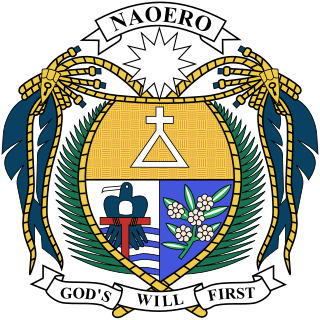
Elections for the Local Government Council were held for the first time in Nauru on 15 December 1951.
Legislative elections were held in New Caledonia on 8 February 1953.

General elections were held in the Territory of Papua and New Guinea between 15 February and 15 March 1964. They were the first elections in the territory held under universal suffrage. Voter turnout among enrolled voters was 65%.